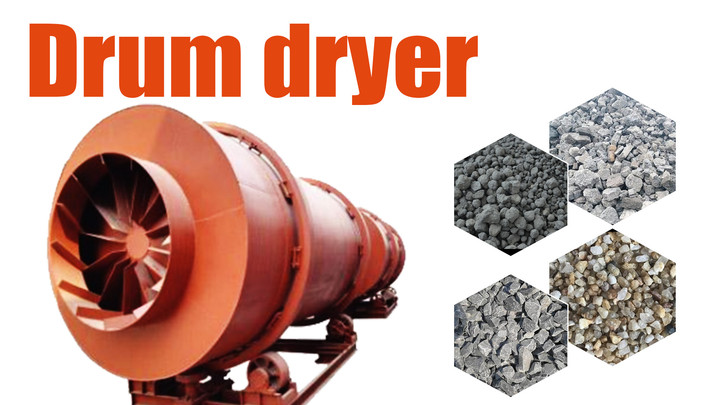
The drum dryer is mainly used to dry materials with high moisture content and strict particle size requirements, such as slag, limestone, clay, river sand, quartz sand, and water slag. Its maximum capacity can reach 40 tons per hour, while the smallest rotary dryer can handle 0.5 tons per hour. It is highly efficient and fast.
Materials continuously tumble inside the dryer drum, ensuring thorough drying. It is more suitable for materials that do not require strict control over final shape, color, or odor. The rotary dryer is widely used in industries such as building materials, metallurgy, minerals, and chemicals.
In the tumble dryer, the material is continuously thrown, turned, and dropped under the action of the high-speed rotating blades and the material board, and at the same time, it has sufficient contact with the high-temperature hot air to carry out strong convective heat exchange, to realize the efficient drying of materials.
The introduction of the drum dryer
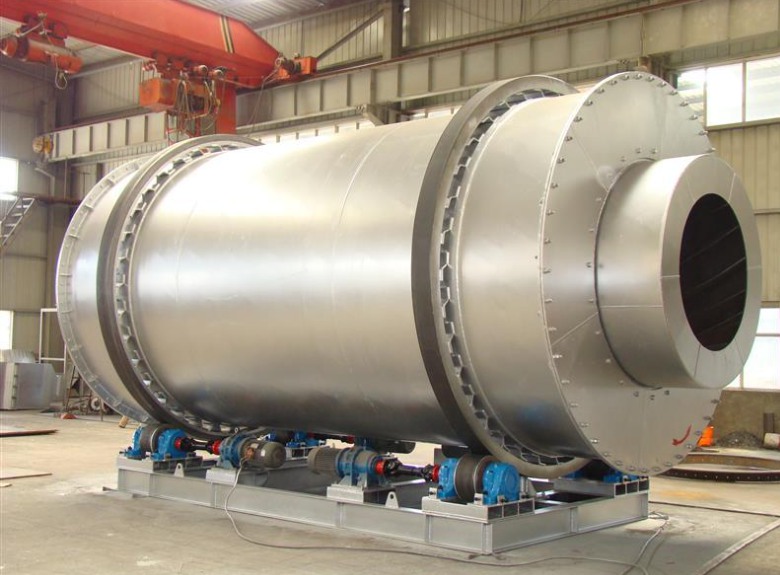
Drum dryer, also known as roller dryer or rotary dryer, is the most common and widely used dryer equipment in industrial equipment. Drum dryer is a dryer for processing Large quantities of raw materials that are widely used in metallurgy, building materials, chemical industry, coal, pharmaceutical, and mining industry. The materials commonly used for drying sand, mineral powder, coal line, chicken manure, cow manure, etc.
The composition of the drum dryer
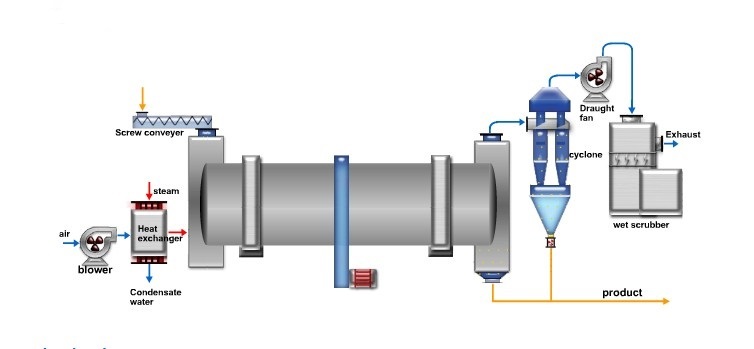
The drum drying equipment is mainly composed of the rotating body, lifting plate, transmission device, supporting device, and sealing ring. It adopted the new type of material lifting plate device that has multiple functions, such as guidance, flow sharing, material lifting, etc. It can make the material distribute evenly in the radial section of the dryer, and the material curtain becomes thin, uniform, and complete. So that it can fully contact the hot gas flow to achieve the purpose of making full use of heat energy.
Rotating drum
The main cylinder, where materials rotate and dry.
Lifting plates
Specially designed to guide, spread, and lift materials evenly.
Drive system
Powers the drum to rotate.
Support system
Holds the drum steady during operation.
Sealing rings
Prevent material and heat from escaping, improving drying efficiency.
Combustion chamber
The core component that generates hot air for drying.
The principle of rotary dryer
The wet materials are sent to the hopper by the belt conveyor or bucket elevator, and then the material will enter the feeding end through the feeding pipe. The inclination of the feeding pipe should be bigger than the natural inclination of the material so that the material can flow smoothly into the dryer. The dryer cylinder is a rotating cylinder slightly inclined to the horizontal.
Under the rotation of the drum and the action of internal lifting plates, the materials continuously tumble and mix while exchanging heat with hot air or the heated drum wall. Moisture gradually evaporates, and the materials move forward along the drum, finally discharging as dried products from the outlet, achieving continuous and efficient drying.
Applications in the industrial tumble dryer
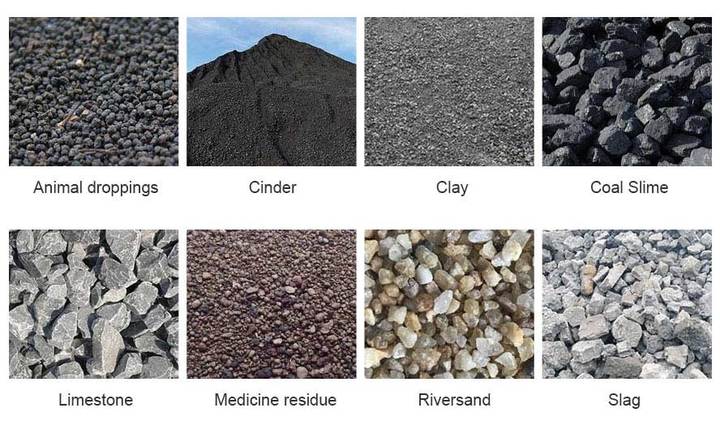
Drum dryers of the Shuliy drying plant are widely used in building materials, metallurgy, minerals, chemicals, cement, and other industries. They are mainly used for slag, limestone, clay, river sand, quartz sand, and water slag. It can also be used to dry animal manure and other materials with high wetness.
Exhibition of drum dryer
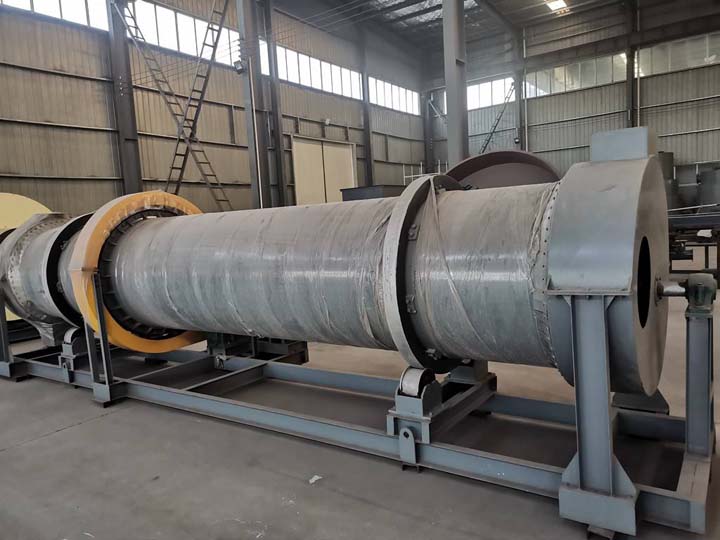
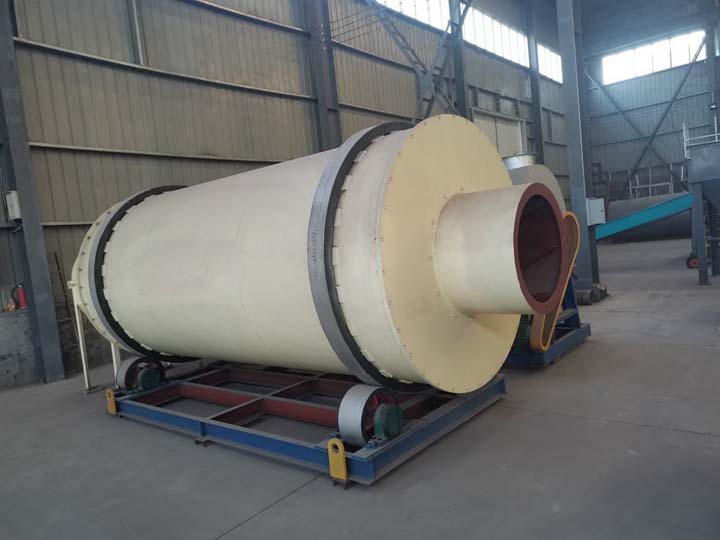
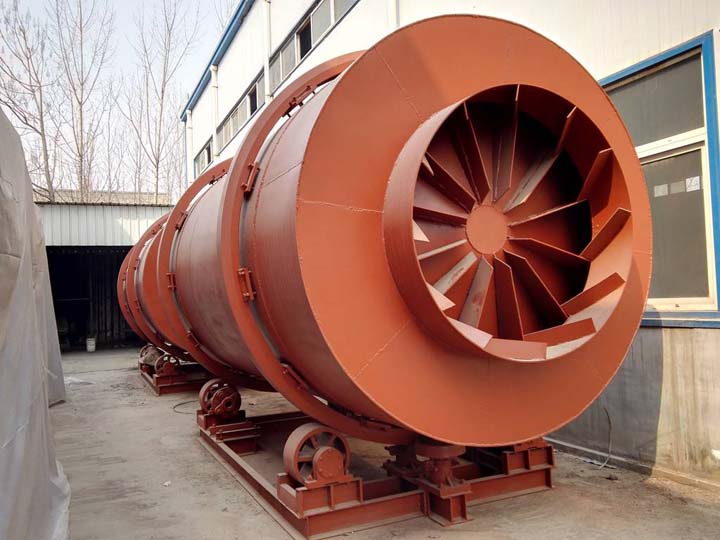


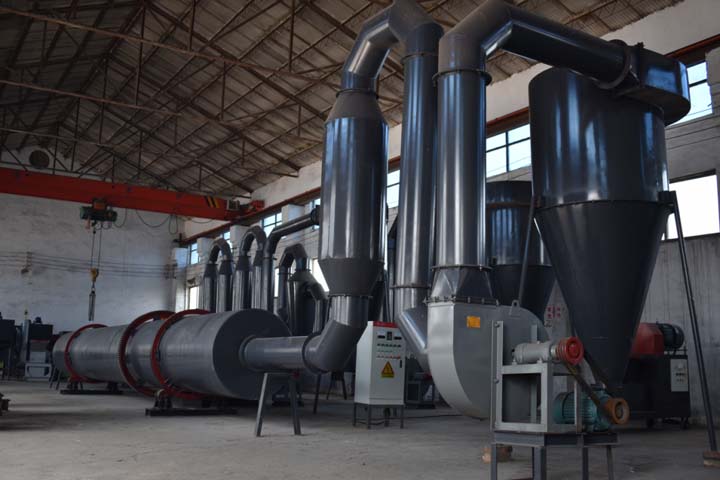
Features of the roller-type dryer
- Advanced drying technology, using high-temperature rapid drying technology, large heat transfer coefficient, high thermal efficiency, and high drying strength;
- The dryer has a high degree of automation and does not require too much manual operation. The system operation realizes automatic control and adjustment. Reducing production safety hazards and improving drying efficiency.
- A large fluctuation range is allowed in operation, easy to operate.
- With the direct contact between the hot gas flow and the material, the output can meet the needs of different users from 10 tons to 100 tons per hour under the condition of sufficient heat exchange.
- The drum dryer has strong expandability, and the design takes into account the production margin. Even if the output increases slightly, there is no need to replace the equipment.


Parameter of the drum dryer
| Model(mm) | Rotate Speed(r/min) | Initial Temperature | Power(kw) | capacity (t/h) | Weight(t) |
| SL600*6000 | 3-8 | ≤700 | 3 | 0.5-1.5 | 2.9 |
| SL800*8000 | 3-8 | ≤700 | 4 | 0.8-2.0 | 3.5 |
| SL800*10000 | 3-8 | ≤700 | 4 | 0.8-2.5 | 4.5 |
| SL1000*10000 | 3-8 | ≤700 | 5.5 | 1.0-3.5 | 5.6 |
| SL1200*12000 | 3-8 | ≤700 | 7.5 | 1.8-5 | 14.5 |
| SL1200*12000 | 3-8 | ≤700 | 11 | 2-6 | 14.8 |
| SL1500*12000 | 2-6 | ≤800 | 15 | 3.5-9 | 17.8 |
| SL1800*12000 | 2-6 | ≤800 | 18 | 5-12 | 25 |
| SL2200*12000 | 1.5-6 | ≤800 | 18.5 | 6-15 | 33 |
| SL2200*18000 | 1.5-6 | ≤800 | 22 | 10-18 | 53.8 |
| SL2200*20000 | 1.5-6 | ≤800 | 30 | 12-20 | 56 |
| SL2400*20000 | 1.5-5 | ≤800 | 37 | 18-30 | 60 |
| SL3000*20000 | 1.5-5 | ≤800 | 55 | 25-35 | 78 |
| SL3000*25000 | 1.5-5 | ≤800 | 75 | 32-40 | 104.9 |
How does a rotary dryer dry limestone?
The rotary dryer dries limestone by tumoring the material inside a rotating drum while it is heated by hot air or the drum wall. As the drum rotates, internal lifting plates lift and mix the limestone, ensuring uniform heat transfer. Moisture gradually evaporates, and the dried limestone moves forward along the drum to the discharge end, achieving continuous and efficient drying.
| Parameter | Range/Value | Description |
|---|---|---|
| Feed moisture | 10–25% | Moisture content of raw limestone |
| Discharge moisture | 1–3% | Target moisture after drying |
| Drum length | 6–20 m | Selected according to capacity and drying requirements |
| Drum diameter | 1–3 m | Determines material retention time and tumbling effect |
| Drum inclination | 2–5° | Ensures smooth material movement |
| Drum rotation speed | 1–5 rpm | Controls drying time and material tumbling |
| Hot air temperature | 150–400 ℃ | Adjusted based on limestone particle size and moisture |
| Capacity | 5–50 t/h | Material handling capacity under continuous operation |
Key points for data analysis
- Moisture evaporation efficiency: Higher feed moisture requires higher hot air temperature and longer drum retention time.
- Material retention time: Drum length × inclination × rotation speed determines the drying time of limestone in the drum, directly affecting the uniformity of discharge moisture.
- Energy consumption analysis: Hot air temperature is directly related to output; optimizing drum speed and inclination can reduce energy consumption per ton of limestone.
- Uniform drying: Lifting plate design and drum tumbling ensure thorough heating, reducing over-dried or wet lumps.
The above is a simple data analysis for limestone drying. If you want to learn more or explore other drying solutions, please contact us through the pop-up chat.
